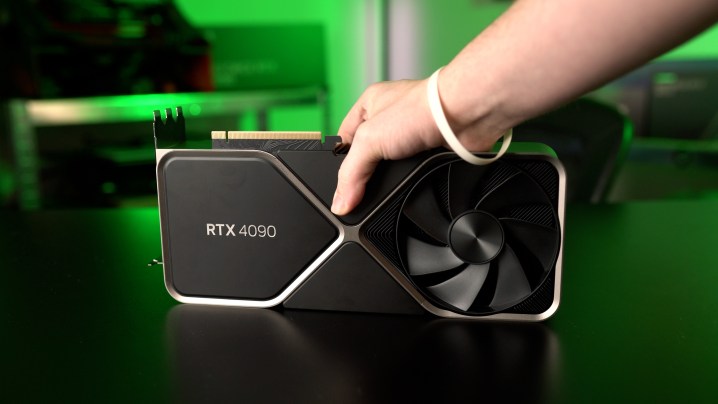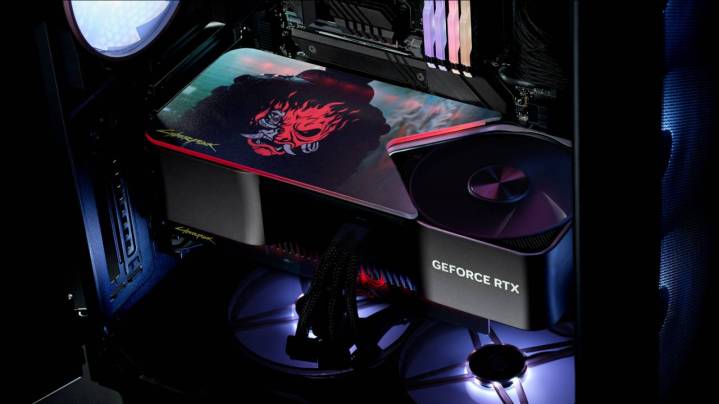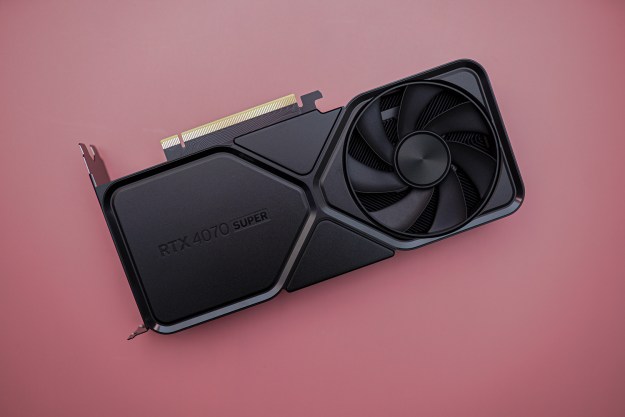Nvidia’s 40-series GPUs launched recently, and to say they’ve made waves in the computing world would be a serious understatement. These cards are big, powerful, and outrageously expensive. Yet if you want the most absurd performance cards you can get your mitts on, they’re second to none.
But with all that said, there’s absolutely no way I’ll be buying one. In fact, I wouldn’t touch one with a bargepole — and there are plenty of reasons why.
Little meets large

For the last couple of years, my daily driver has been a small form factor PC built inside the Ncase M1 chassis. I was attracted to its elegant design and the challenge of building inside something so compact, and its size means I can travel without having to settle for an underpowered laptop and the back pain that comes with it.
Yet all that makes the new 40-series cards utterly anathema to me. I mean, have you seen the size of the RTX 4090? That thing is so large it has its own gravitational field that traps smaller cards in its orbit. Trying to get one in my Ncase M1 would be like trying to fit a pumpkin through the eye of a bagel.
And that’s not to mention the heat. With space at such a premium inside small PC cases, cooling matters. I mean, when I built my PC, I relied heavily on an extensive spreadsheet of 14 different fan configurations to find the one that kept everything the coolest (it’s here if you’re interested). The RTX 4090 manages its heat reasonably well, but there’s no escaping the fact that it runs hot. In a small case like mine, that’s a problem.
I don’t need the performance
I say I like building PCs, but what I actually like most is planning a build. Checking reviews and benchmarks, finding sales and bargains, working out how many USB ports I actually need on a motherboard – I could (and do) spend hours on this stuff. It’s like solving a giant puzzle made of IOPS and CUDA cores.
And I’ll admit it: Sometimes I get carried away. Before finalizing my current build, I was convinced I needed an RTX 3080 so I could, you know “futureproof” my PC. Sadly, this was in the middle of the GPU shortage, and getting a 3080 for a reasonable price was impossible. Yet somehow, I managed to snag an RTX 3070 for its RRP. Yes, you are permitted to send me hate mail.
Yet getting that 3070 highlighted an important truth to me — there was no way I actually needed an RTX 3080 after all. My most-played games in recent months are Cyberpunk 2077 and Stardew Valley. The 3070 handles the former with ease. It eats the latter alive.
When the most-played title in your Steam library is the plankton-strength Football Manager series (combined playtime: 5,233 hours, and that’s not a joke), you should probably admit you’re not exactly the target audience of the RTX 40-series. That doesn’t mean no one is, it just means it’s not me.
It’s OK, I’ll pass

It’s clear that the RTX 4090 is aimed at a very specific segment of PC builders. And for those six people, it might be the perfect upgrade. But for the rest of us, even the remainder of the 40-series is probably overkill.
I’ve never been someone to upgrade my devices every year, and the 40-series has made it crystal clear how unnecessary that would be for me. If you’re looking to land yourself Nvidia’s latest and greatest, you have my blessing. I’ll just be over here playing Stardew Valley and planning my next fantasy PC build.
Editors' Recommendations
- Nvidia could flip the script on the RTX 5090
- Don’t buy the RTX 3060 in 2024
- 5 GPUs you should buy instead of the RTX 4070
- AMD needs to fix this one problem with its next-gen GPUs
- Nvidia is the ‘GPU cartel,’ says former AMD Radeon manager




